[Knowledge-based AI] {ud409} Lesson 3: 03 - Semantic Networks
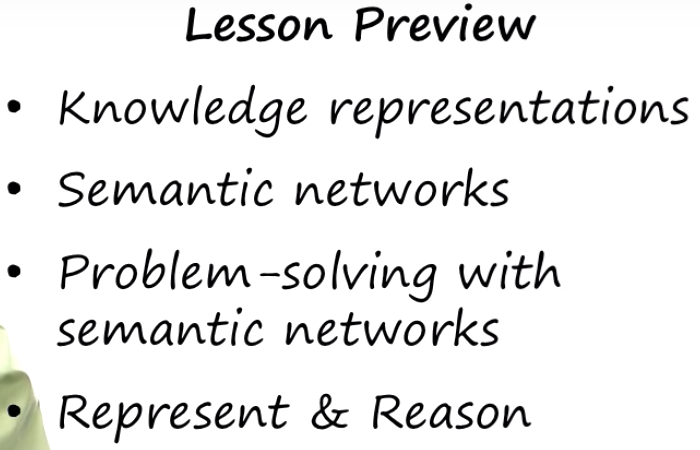
Knowledge Representations

eg. F=ma
Introduction to Semantic Networks


The example above is adapted from Raven's test of progressive matrices. For further information, see:
Raven, J. (2003). Raven progressive matrices. In Handbook of nonverbal assessment (pp. 223-237). Springer US.
Exercise: Constructing Semantic Nets I

The example above is adapted from Raven's test of progressive matrices. For further information, see: Raven, J. (2003). Raven progressive matrices. In Handbook of Nonverbal Assessment. (pp. 223-237). Springer US.

Structure of Semantic Networks
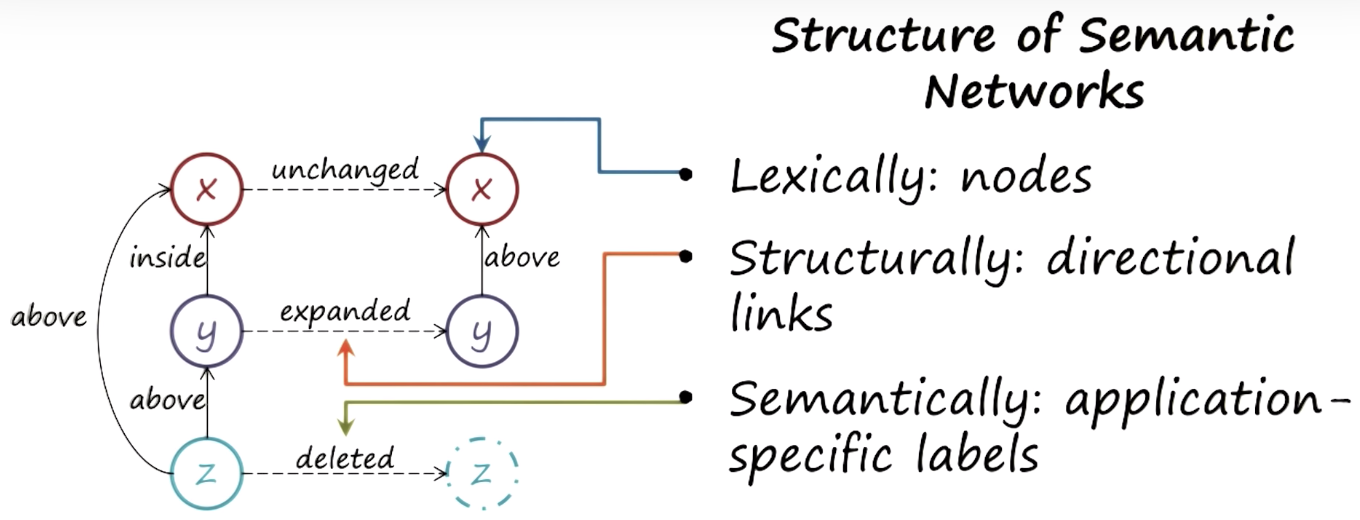
Characteristics of Good Representations
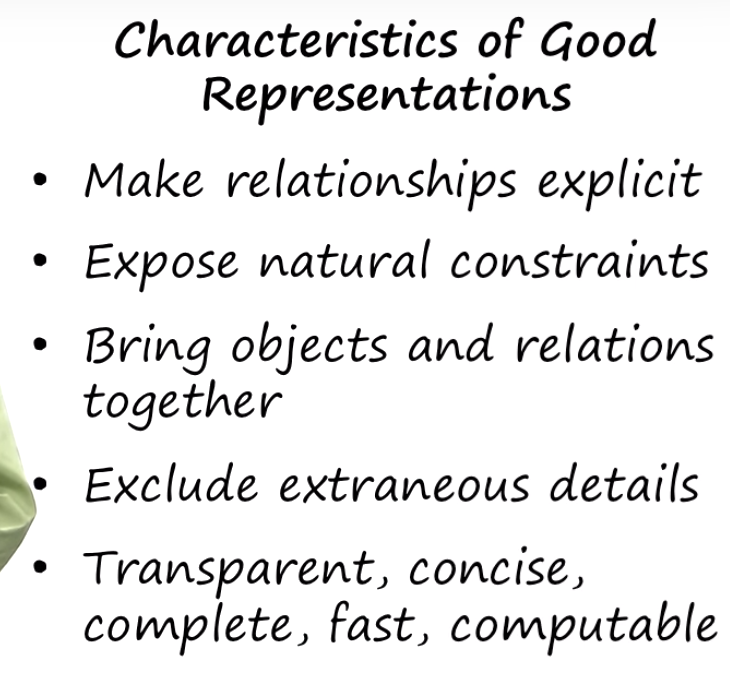
This list of characteristics is adapted from the following book:
Winston, P. (1993). Artificial Intelligence (3rd ed.). Addision-Wesley.
Discussion: Good Representations
What's a good representation for everyday life?
Guards and Prisoners
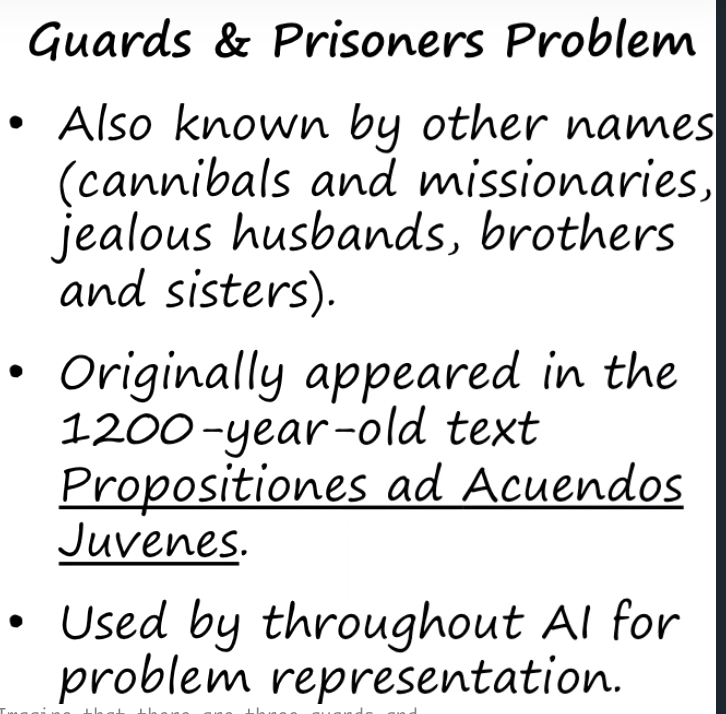
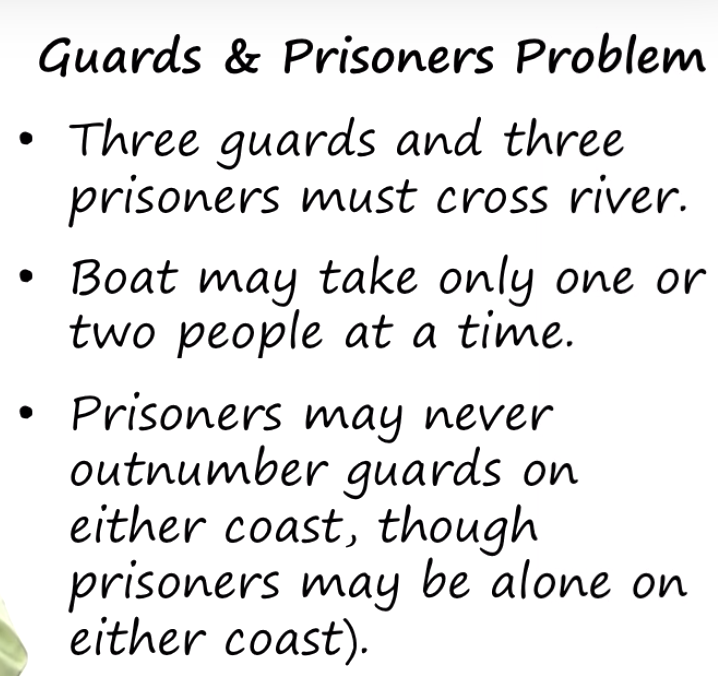
The guards and prisoners problem is adapted from the cannibals and missionaries problem. For more information, please see:
Amarel, S. (1968). On representations of problems of reasoning about actions. Machine intelligence, 3(3), 131-171.
Semantic Networks for Guards & Prisoners

Solving the Guards and Prisoners Problem

only two doable choices
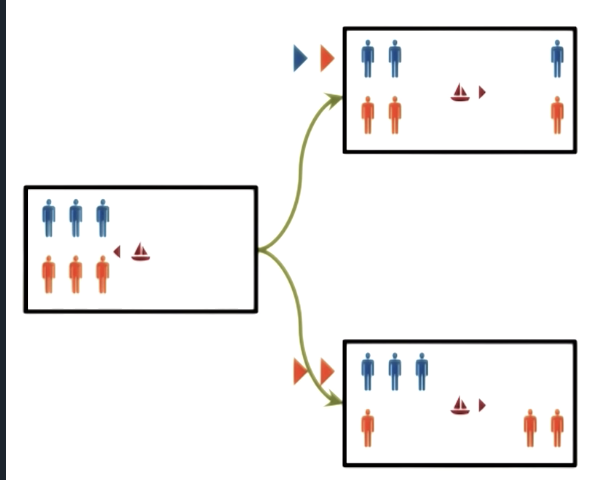
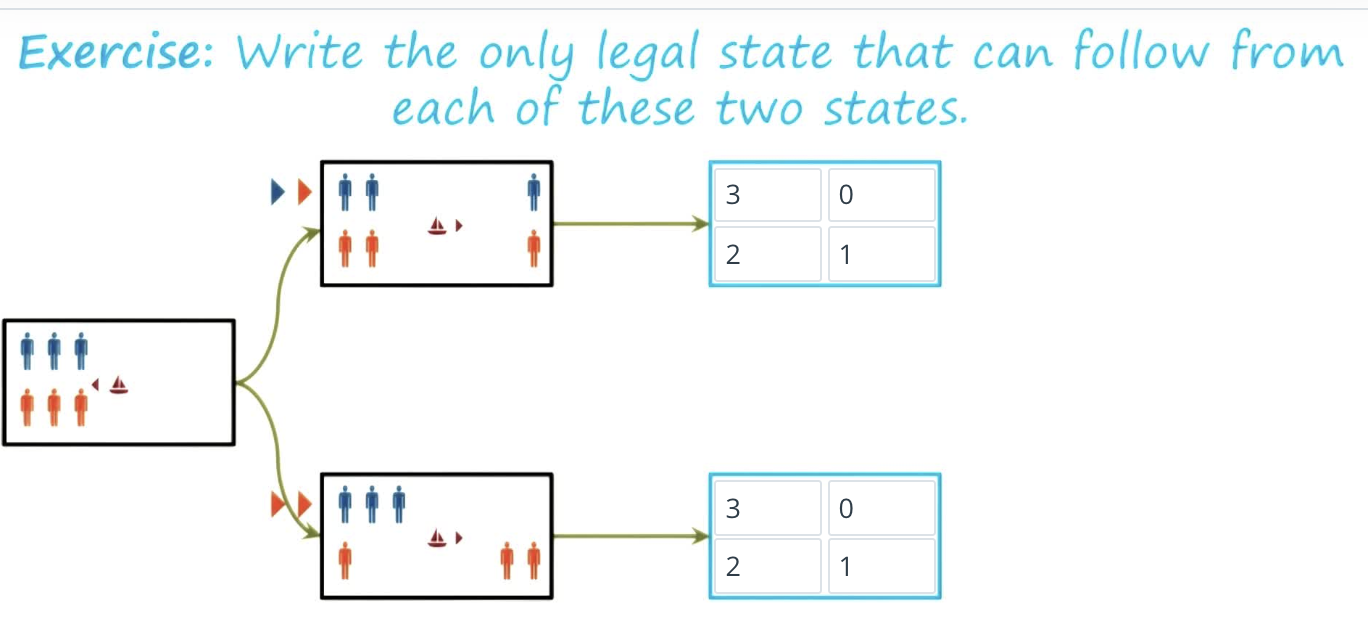


Represent & Reason for Analogy Problems
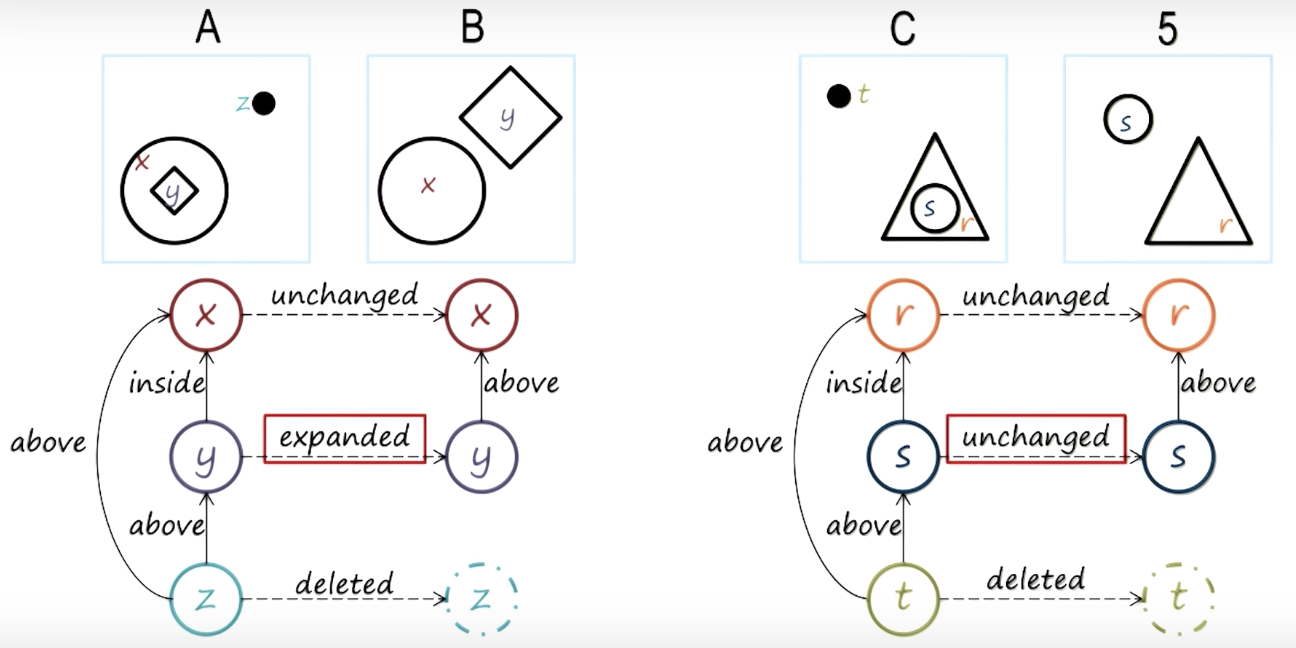
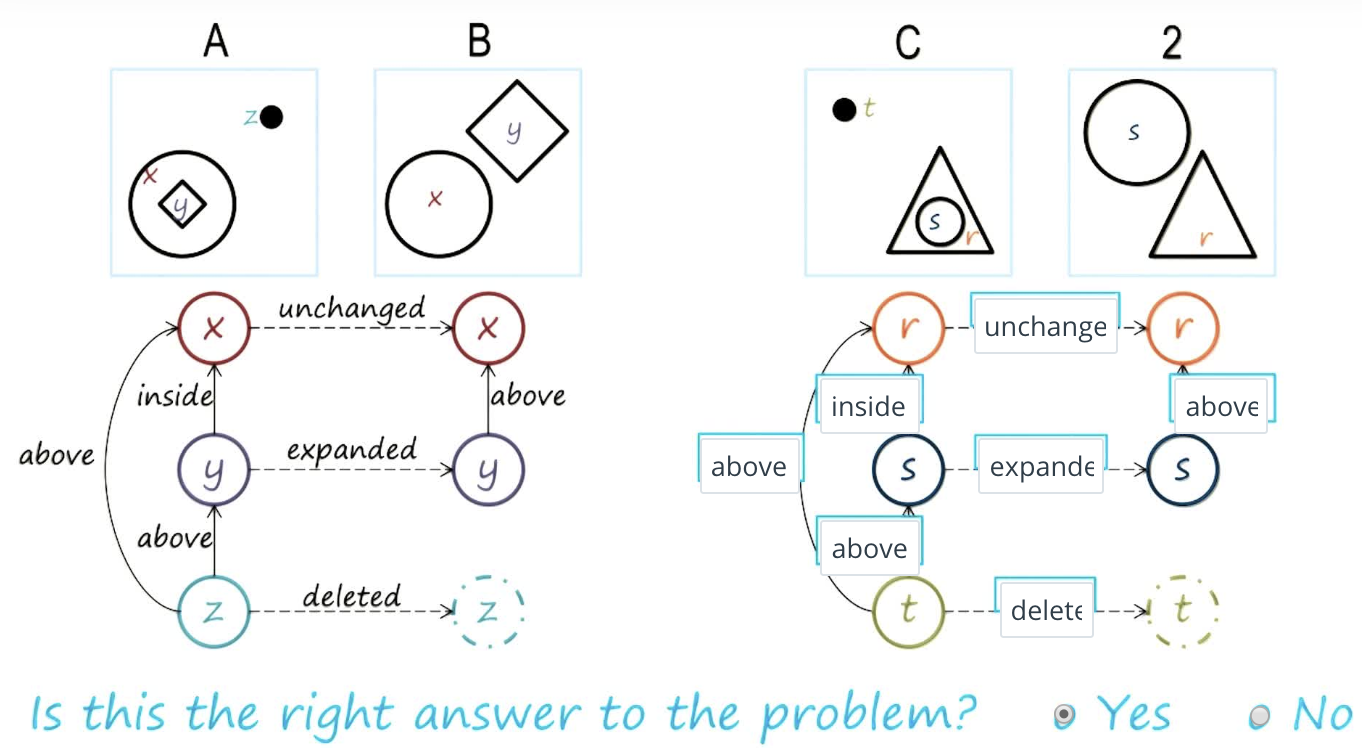
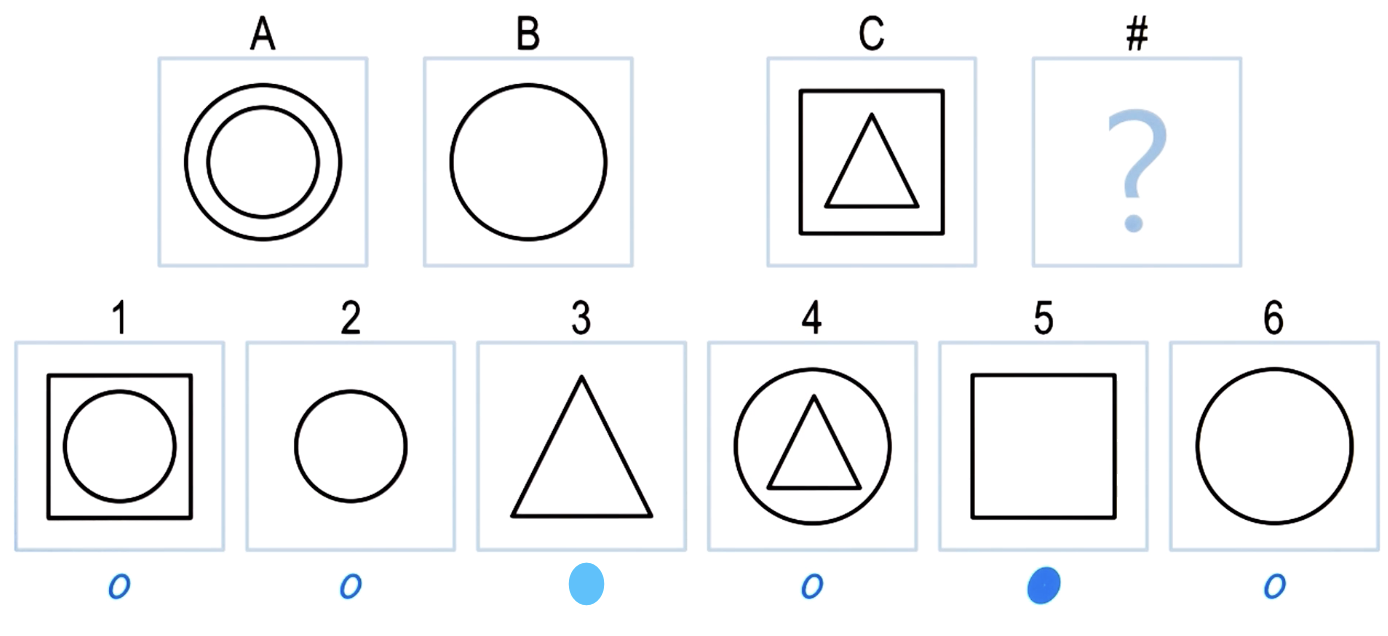
more people choose 5 rather than 3, why?
Choosing Matches by Weights

Errata: The arrow between p and q on the left should be in the opposite direction.
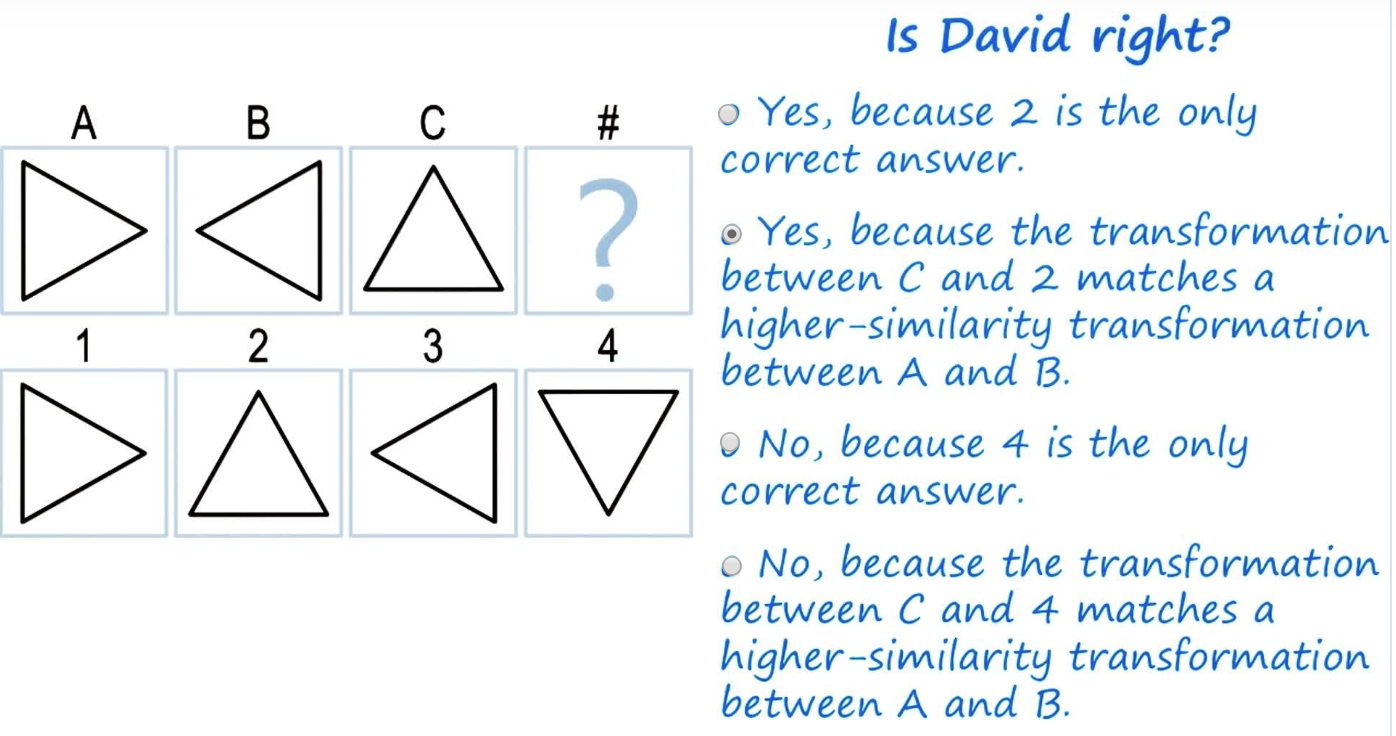
Connections
corresponding problem / matching problem
Assignment: Semantic Nets
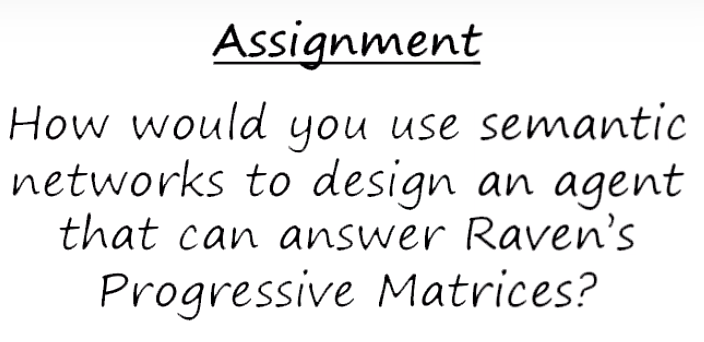
Semantic Networks: Winston Chapter 2, pp. 16-32 Can be found at http://courses.csail.mit.edu/6.034f/ai3/rest.pdf
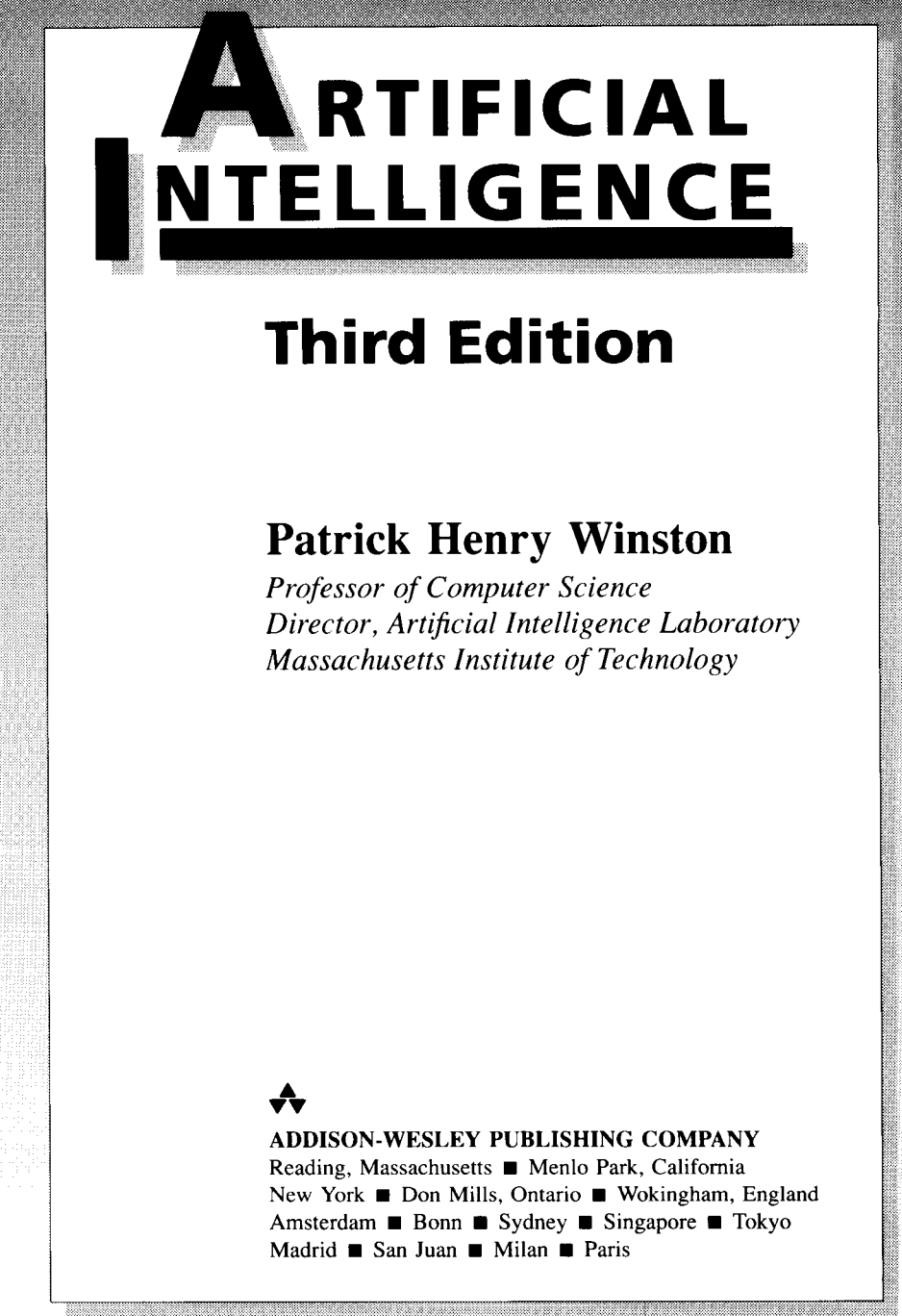

representation becomes the key, because we use knowledge to solve problems, and we need to first represent the knowledge.
secondly, sematic networks are related to spreading activation networks, a very popular theory of human memory.
eg, a story, with only two sentences: Jonh wanted to become rich. He got a gun.
How didi it draw the inferences about robbing a bank which the story didnt tell
imagine we have a sematic network, with a large number of nodes.
the two sentences spread activations in the network and the activations merge at some region.
and all the nodes on the pathway become part of the story.



